PPC
How to Use Conversion Value Rules in Google Ads

Adding values to your conversions can be an impactful tool for advertisers. Conversion value rules are very common for ecommerce folks as they typically optimize to ROAS. But this strategy can also be useful in lead generation campaigns for the same reason. It may be a little trickier to set up, but the benefits can be huge.
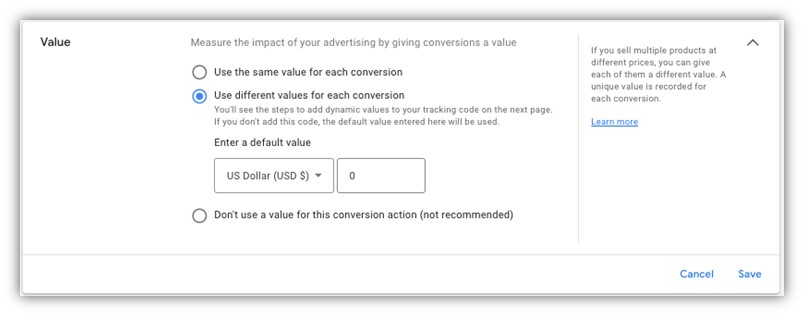
For ecommerce, the revenue is usually tracked directly from the site based on the value of the cart that was purchased. That means the revenue should be dynamic and reflect the actual value of each sale.
But for lead generation, where a lead’s value to your business is usually a best-guess estimate to start with, how can we adjust the values to reflect higher or lower conversions for the same conversion action?
Enter: conversion value rules.
In this article, we’ll walk through everything you need to know about conversion value rules to make them work for you.
Table of contents
How do conversion value rules work?
Conversion value rules allow you to augment the value of a conversion in your Google Ads account based on specific criteria. (We’ll cover these in a moment.)
This means that each conversion can have a dynamic value based on attributes that are more (or less) meaningful to your business.
✅ Are you on track to hit your Google Ads conversion goals? Find out, and get tips on how to improve, with our free Google Ads Grader!
Which customer attributes can conversion values be adjusted for?
The main conditions you’re able to adjust conversion values for are audience segment, geography, and device. There is an option to adjust for specific conversion actions such as store visits or store sales, but those are currently less valuable to my clients than the others.
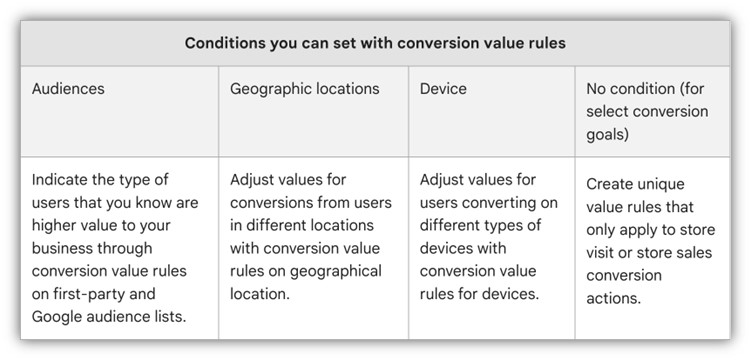

Additionally, each conversion value rule can have a secondary condition. This means you can combine attributes across these categories for more accurate tracking. For instance, if you know your net new customers on desktop have a higher lifetime value than a returning customer or a new customer on mobile, you can create a rule for that.


Which Google Ads campaigns are eligible for conversion value rules?
Google phrases the effectiveness of conversion value rules like this:
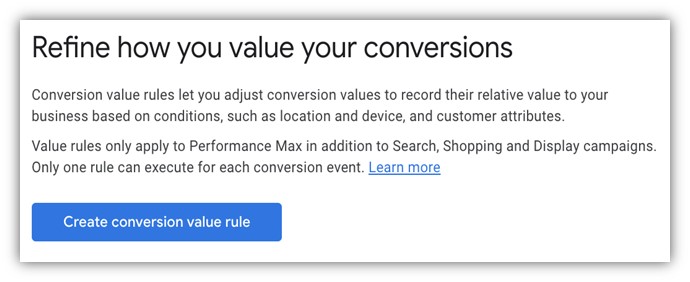

“Only to Performance Max in addition to Search, Shopping, and Display campaigns.”
I’m not saying anything is definitely going to change, but the wording of this is a little suspicious to me. No tin foil hat theories for today. Just…calling out the curious. Either way, conversion value rules can apply to those four campaign types…for now.
How to set up conversion value rules in Google Ads
Now that we have the basics out of the way, let’s walk through some examples to see how conversion value rules work.


To find the conversion value rules manager within the Google Ads platform, head to the value rules portion of the menu under goals, then click create conversion value rule to get started.
Conversion value rules based on audience
First, let’s create a conversion value rule based on a Google Ads audience segment.
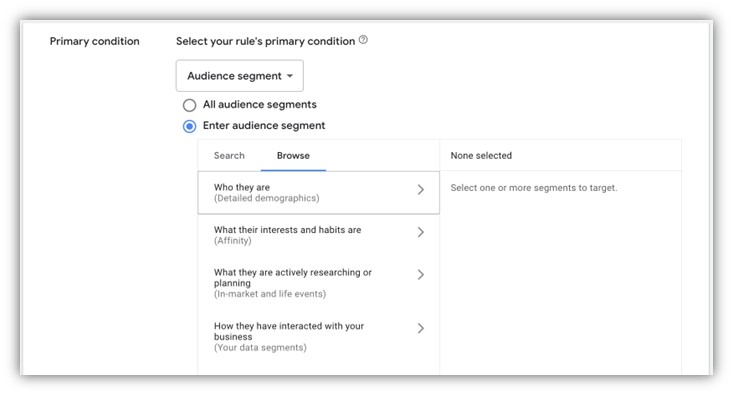

Like nearly all other uses of audiences in the Google Ads interface, you can choose to search for a specific audience or you can browse from the list of categories provided.
As you can see, conversion value rules can be created for audiences based on detailed demographics, affinity audiences, in-market, and life events as well as your owned data segments, meaning remarketing and customer uploads.


You’re able to choose as many audience segments as you like, and each time one is added, the list of users will change in the upper right portion of the screen. You’ll notice that each logic statement is capitalized and bolded as OR, meaning the user can be in any one of those audience segments and be eligible for this value adjustment. You can’t set up rules with AND statements, requiring them to be in all groups. For that, you would need to create more complex segments in the audience manager in Google Ads.


Once you’ve selected all applicable audience segments, you can then choose the secondary condition, which must leverage either the device or geography conditions. You won’t be able to combine Audience segments as mentioned above.
Conversion value rules based on device
I have it shown here as the secondary condition to continue the example above, but even if you use device as the primary condition, the options will be the same.
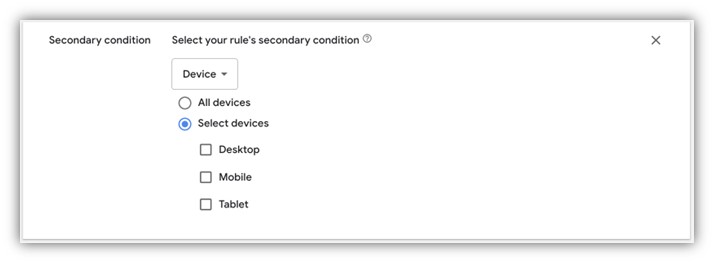

You can choose to adjust a conversion value for all devices (which, frankly, seems counterintuitive to me) or, you can select which devices you want to augment the conversion value for. This includes only desktop, mobile, and tablet with no other narrowing features included.
Conversion value rules based on geography
Similar to devices, the geography setting will be the same as a primary condition, even though I’m showing it as a secondary one.


With location adjustments, you’re given all of the same controls you would for any other campaign with the exception of radius targeting. Otherwise, you can add country, state, city, DMA, or zip code level targeting or exclusions for locations around the world.
You also have control over the advanced location settings, including controlling for the user’s actual location or locations they’re showing interest in.
Adding the value adjustment for selected conditions
Regardless of which conditions you’ve opted to use and whether you’re using a secondary group or not, the options for the value adjustments are the same.


You’ll have the option to choose either an add or multiply operator, then you’re able to set the value of how you’d like the value to be adjusted.
Both of these are pretty self-explanatory, with the add function allowing you to increase the conversion value by a fixed amount and multiply giving the ability to scale at a more dynamic rate.
🌱 Learn how to leverage channels like Google Ads to grow your business fast with our free growth strategy guide.
Limitations with conversion value rules
You’ve just seen how conversion value rules can be very useful for tracking the actual value your business sees from a conversion, but there are some limitations.
First, only one conversion value rule can be applied to each conversion action. So you’ll need to select the one with the greatest impact or the biggest degree of accuracy since you only get one option.
If you decide you need to change the conversion value rules you have for a conversion action, you’ll have to delete the old value rule and create a new one. All previous conversion value data will remain, but the new augmentation will be applied to all conversions moving forward.
Second, conversion value rules are only additive with very limited control for decreasing the value of a conversion. As you can see below, if you try to add a negative number in the add or multiply field, you’re given an error.


The only way to adjust a conversion value down is evident in the image above: you can add multipliers of less than 1 to an action, meaning you could cut a conversion value down by 50%, or half of its original value. This is possible for any adjustment between 0.5 and 0.99.
That said, it seems this tactic is mostly intended for incremental adjustments up, not down. If you find that a large group of your converters are worth less than your current value and the limitations with conversion value rules don’t allow you to fully reflect that discount, it may make more sense to adjust the value in the conversion tracking section, then use value rules to highlight the more valuable exceptions rather than to devalue the other group.
How to know if conversion value rules are right for your business
Conversion value rules can help you better track the ROAS of your Google Ads campaigns by incrementally increasing the associated conversion value based on a handful of conditions. These can be adjusted to your will and changed any time, but are designed to leverage both your knowledge of your customers and Google’s machine learning to help you get more value out of your account.
If you’re not able to track dynamic conversion values but are certain of some audiences, geographics, or device categories that are more valuable to your business, these can be a great way to better reflect the success of your campaigns.


















